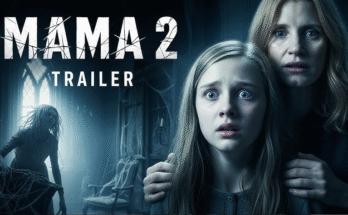Desire matures. Love deepens. But shadows never vanish — they only learn to move quieter. Fifty Shades 4: Shadows of Us returns to the world of Christian and Ana Grey with more stillness, more ache, and infinitely more truth. Gone is the shock of discovery — in its place, a subtler, more devastating story of two people who have everything, and yet fear losing what cannot be bought: trust.

The film opens on serenity — the Greys’ villa by the sea, sunlight gliding across marble floors, the quiet hum of a life perfected. Christian (Jamie Dornan) and Ana (Dakota Johnson) appear stronger than ever, surrounded by family, success, and peace. But the silence between them hums with tension. It’s the kind of quiet that comes not from happiness — but from what’s being held back.
Dakota Johnson gives her most mature and emotionally layered performance yet. Her Ana has grown into a woman who no longer fears passion, but questions its cost. Every look, every pause between sentences carries the weight of what she doesn’t say. She’s magnetic — fragile and fierce all at once.

Jamie Dornan, older, steelier, delivers a Christian Grey transformed by fatherhood and haunted by memory. He’s still a man of control — but now that control hides vulnerability. His eyes betray exhaustion, longing, and fear. When he tells Ana, “You taught me love… but not how to live with it,” the moment cuts deeper than any whip ever could.
Directed by Sam Taylor-Johnson, returning to the helm with poetic restraint, Shadows of Us trades spectacle for introspection. The camera lingers on touch — a hand withdrawn, a glance sustained too long, the tension of bodies that know each other too well. This is eroticism reborn as intimacy — less about pleasure, more about power, forgiveness, and the quiet terror of being seen completely.
The screenplay, co-written by Kelly Marcel, redefines the series’ tone. The dialogue feels sharp, confessional, almost theatrical. Conversations unfold like duets — whispered confrontations that reveal more in silence than in speech.

When an unexpected letter arrives from someone in Christian’s past — a ghost of his former obsessions — the couple’s world begins to tremble. Old patterns resurface. Ana must decide if love means enduring the past, or finally confronting it. The emotional climax is devastating: a late-night scene on the villa balcony, where Ana tells him, “You taught me to surrender, but I never learned to stop fighting.” The storm that follows — literal and emotional — becomes the film’s turning point.
Visually, Shadows of Us is exquisite. Cinematographer Seamus McGarvey paints with moonlight and reflection — the villa’s windows doubling as mirrors, the sea as both sanctuary and threat. Every frame breathes tension, as if passion itself is trying to break free.
The soundtrack — moody, sensual, and mature — features new songs by The Weeknd, Hozier, and Banks, echoing themes of temptation and redemption. The music doesn’t heighten the emotion; it haunts it.
By its end, Shadows of Us isn’t about dominance or surrender — it’s about balance. Two souls learning that true love doesn’t erase darkness; it simply teaches you how to live within it. The final scene — Ana and Christian sitting in silence as dawn breaks, fingers barely touching — is as intimate as cinema gets.
💬 Film Verdict:
⭐ ★★★★☆ (9.0/10) — Elegant, sensual, and unexpectedly profound. “Fifty Shades 4: Shadows of Us” transforms desire into dialogue and pain into poetry. Johnson and Dornan burn quietly, proving that love’s greatest challenge isn’t passion — it’s peace. 🖤✨



